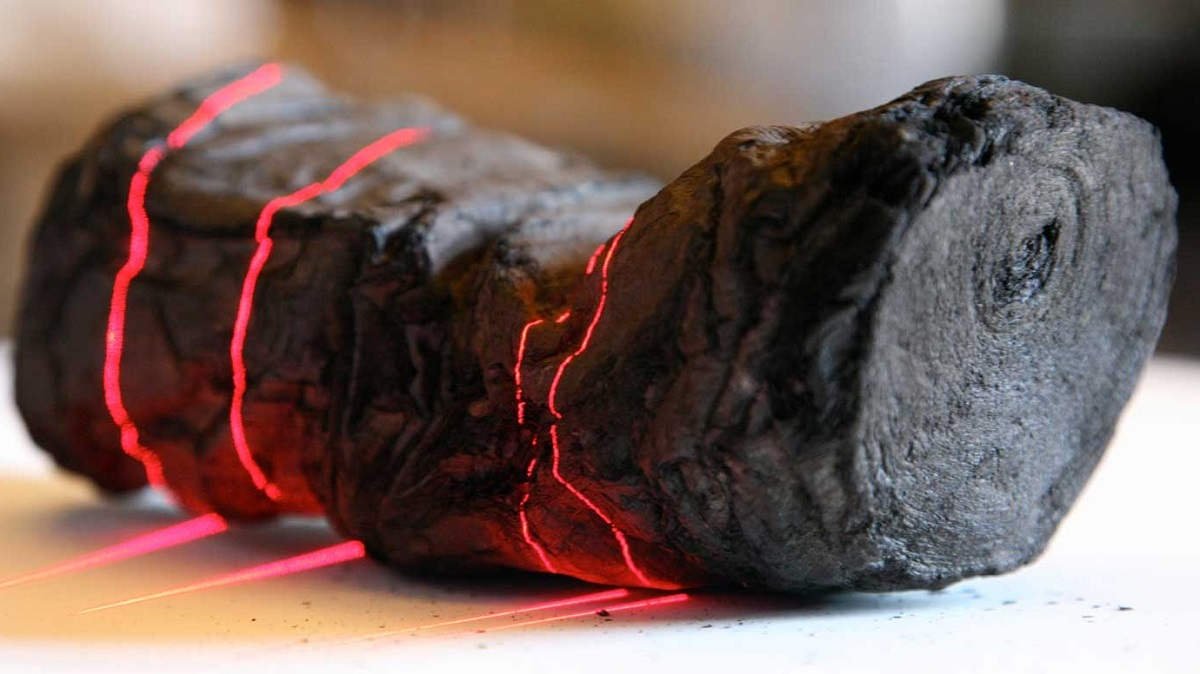Farritor’s groundbreaking work hinged on the development of a machine-learning algorithm that identified Greek letters on various lines of the rolled-up papyrus.

In a monumental achievement, a 21-year-old computer science student from the University of Nebraska–Lincoln, Luke Farritor, has won a global contest by successfully deciphering the first text inside a carbonized scroll from the ancient Roman city of Herculaneum.
These scrolls had remained unreadable since the catastrophic volcanic eruption in AD 79, the same event that buried nearby Pompeii. This milestone breakthrough could potentially unlock a treasure trove of texts from the only intact library to have survived from Greco-Roman antiquity.
Farritor’s groundbreaking work hinged on the development of a machine-learning algorithm that identified Greek letters on various lines of the rolled-up papyrus. Employing subtle, small-scale differences in surface texture, he trained his neural network to discern the inked characters.
The first deciphered word, πορϕυρας (porphyras), meaning ‘purple’, marked an astonishing moment for the academic community, particularly Federica Nicolardi, a papyrologist at the University of Naples in Italy, who described it as a “dream come true.”
The eruption of Mount Vesuvius in AD 79 led to the entombment of hundreds of scrolls in Herculaneum, submerged under 20 meters of volcanic ash. Early attempts to unfurl the papyri resulted in a jumble of fragments, leaving scholars doubtful about the possibility of ever comprehending their contents. Nicolardi noted, “These are such crazy objects. They’re all crumpled and crushed.”
The Vesuvius Challenge, a competition with a series of awards culminating in a grand prize of $700,000 for reading four or more passages from a rolled-up scroll, announced Farritor as the winner of the ‘first letters’ category, awarding him $40,000. His achievement involved interpreting over 10 characters in a 4-square-centimeter section of papyrus. Youssef Nader, a graduate student at the Free University of Berlin, secured second place with a $10,000 prize.
The significance of this achievement resonates deeply with historians and scholars. The scrolls in Herculaneum were discovered in the eighteenth century, originating from the remains of an opulent villa believed to have connections to Julius Caesar’s father-in-law.
Deciphering these papyri could potentially revolutionize the understanding of ancient history and literature. Unlike most classical texts, which have been transmitted through centuries of copying, the Herculaneum library harbors works directly from the original authors.
Until now, researchers had only been able to study fragments that had been successfully opened. While a few Latin works were identified, the majority featured Greek texts related to the Epicurean school of philosophy.
Philosopher Philodemus contributed works on topics such as vices, music, rhetoric, and death. The library holds over 600 unopened scrolls, primarily housed in the National Library in Naples, with a few held in the United Kingdom and France. Additionally, there may be more undiscovered papyri in lower levels of the villa yet to be excavated.
Christopher Seales, part of the team that worked on the breakthrough, dedicated years to developing techniques for virtually unwrapping these ancient scrolls using X-ray computed tomography (CT) scans. In 2016, they successfully deciphered a charred scroll from En-Gedi in Israel, revealing sections of the Book of Leviticus.
However, the carbon-based ink on the Herculaneum scrolls presented a unique challenge. Seales realized that although the ink didn’t stand out in brightness, it might exhibit subtle textural differences that a trained artificial neural network could detect.
The Vesuvius Challenge engaged over 1,500 teams, fostering discussions and collaborations through the gamer chat platform Discord. The competition emphasized collective progress, with winning code shared openly for further development. Farritor, driven by his childhood interest in history and self-taught Latin skills, became an early participant.
The breakthrough moment came when a competitor identified a subtle texture, later coined ‘crackle,’ occasionally visible in images. Farritor honed in on this detail, seeking hints of letters. In a momentous evening, he ran his algorithm on a freshly released image with prominent crackle, leading to the revelation of five letters on his phone screen. The realization that this breakthrough was imminent filled him with exhilaration. Within days, he refined the model to identify the ten letters required for his award-winning achievement.
Papyrologists share in the excitement, recognizing the significance of this milestone. The ability to read even a single word is considered a triumph, as it could lead to the recovery of entire scrolls’ texts, including titles and authors, allowing for precise dating and identification of works.
This achievement stands as a testament to the increasing role of artificial intelligence in aiding the study of ancient texts. It reflects a broader trend in which AI is being leveraged to uncover hidden layers of history, from unidentified Greek inscriptions to languages as diverse as Korean and Akkadian.
Seales envisions that machine learning will continue to illuminate what he refers to as the “invisible library,” a repository of physically present yet unseen texts, from medieval parchment to palimpsests and ancient Egyptian cartonnage.
As the deadline for the grand prize approaches on December 31, the mood is one of “unbridled optimism,” according to Seales. Farritor, already seeing promising results on other segments of the scroll, embodies the hope and potential for further discoveries.